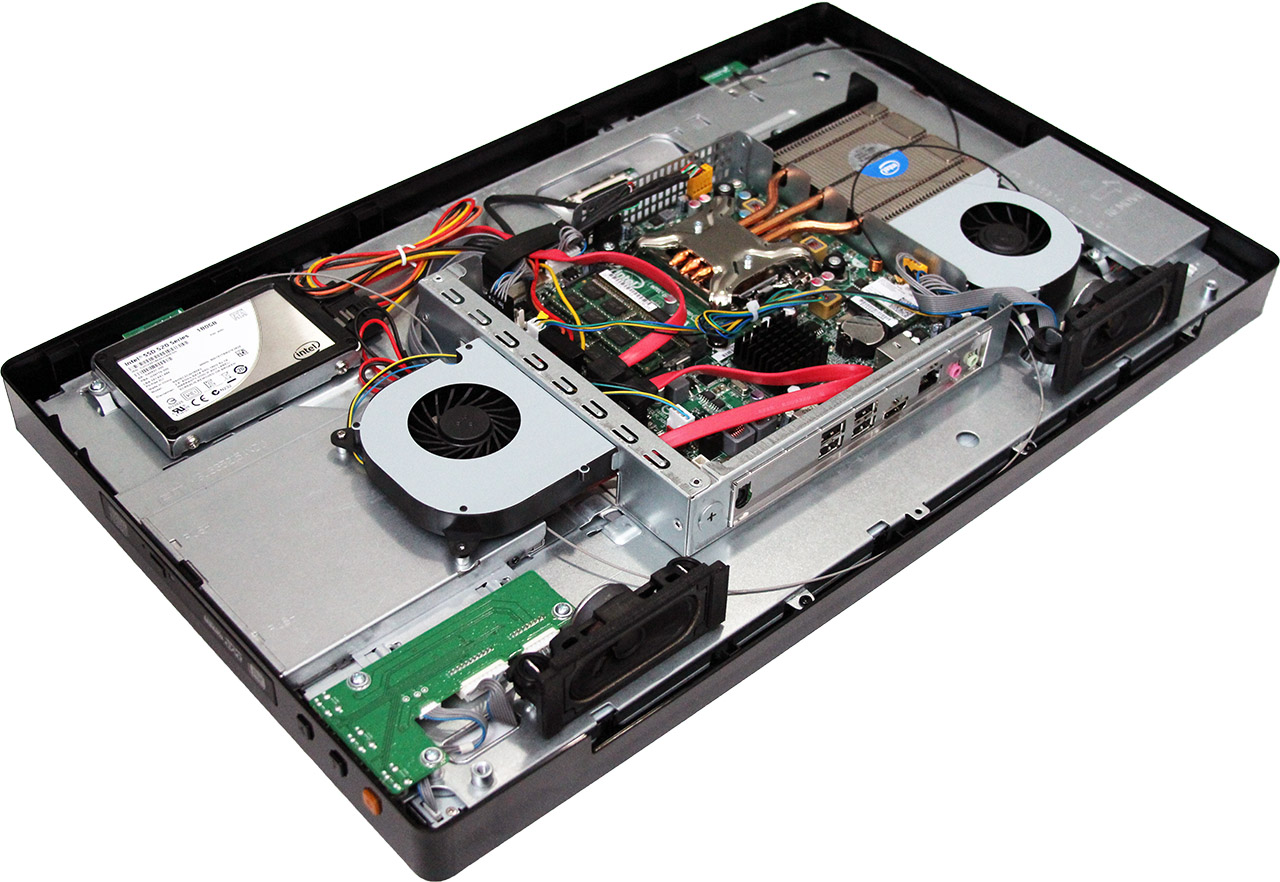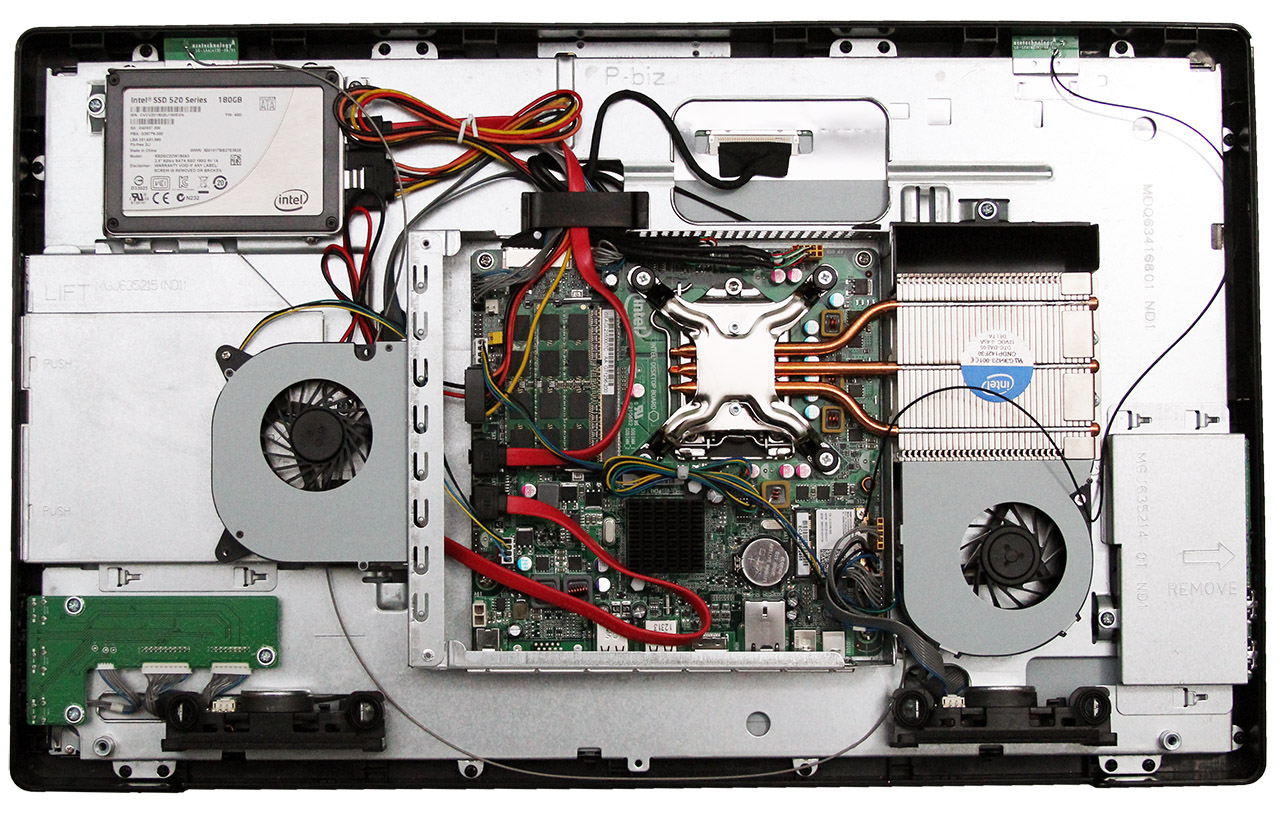Quick Look: Hands-On With LG's 22AM33NB All-In-One Chassis
We just finished building our second all-in-one using the Thin Mini-ITX form factor and a box of off-the-shelf components. Although we still don't have the graphics performance we crave, LG's 22AM33NB chassis is a clean example of a productivity machine.
A few months back, I did a story on building an all-in-one computer from parts called Take That iMac?: Build Your Own All-In-One PC. The system had some pretty decent parts in it, and it’s currently serving as a solid work machine in a real estate office. Oh yeah—and for a lot less than an iMac, too. But not long after my story went live, Apple updated its iMac family.
It was only a matter of time, and the company’s changes were pretty significant. It shrank the thing, tapering its edges off to just 5 mm-thick. It also gave the most expensive models a flash storage option, integrated USB 3.0 and Thunderbolt across the board, and deployed no fewer than five different mobile GeForce graphics models. The top-end GeForce GTX 680MX is nothing to sneeze at, provided your game supports OS X, of course.
Even then, though, the 27” iMac with a 3.2 GHz Core i5, 8 GB of DDR3-1600, 768 GB of flash-based storage (strangely, the only way Apple offers it), and a GeForce GTX 680MX sells for almost $3,500. Umm…no. Paring back to 1 TB of magnetic storage and the GTX 675MX gets you down to $2,000, but that’s still pricey. It doesn’t help that Apple is still in the middle of having supply issues. That decked-out iMac isn’t shipping for another month.
What’s your alternative today on the PC side? Well, I’m still waiting for Intel to send over a touch-enabled chassis that I can populate with higher-end parts than the 21.5” Loop system it sent over in my first story. Armed with an Ivy Bridge-based CPU and an SSD, discrete graphics will be the only thing really missing. Companies like HP already ship touch-capable all-in-ones with add-in graphics (the Envy 23-d005), but it remains to be seen when the do-it-yourself community will get access to something fast enough for gaming.
More recently, Intel shipped us another example of a 21.5” all-in-one chassis in LG’s 22AM33NB. Honestly, I didn’t have any trouble integrating the Loop-based enclosure. But this one was supposed to be even easier to put together. Indeed, once you pop off its back cover, everything’s within easy reach. The most time-consuming part is probably making all of the motherboard connections.
In addition to the LG chassis, Intel also sent over its DH61AGL motherboard, a derivative of the DH61AG it showed us originally, only about $20 cheaper online. It lacks USB 3.0, which I’d very much miss now that all of my external storage supports the faster interface. But the fact that it’s missing DVI and eSATA from its back panel is largely inconsequential. There’s also no full-length mini-PCIe slot for an mSATA SSD, but as you can see in the picture, I simply dropped a 180 GB drive into the all-in-one itself. Not that I even need solid-state storage in there. This machine might become a productivity box, or something in a bedroom I can use to stream music using the Xbox Music app in Windows 8.
As a way to get the cost of a new machine down a bit, the DH61AGL might be helpful, particularly when a new iMac starts at $1,300 and includes fairly meager specs. At least for now, that value angle might be the best reason to build your own all-in-one PC. But I’m still looking forward to the next one of these I build, which hopefully gives the new iMacs a run for their money. Maybe by then the Leap Motion controller will be ready to play with, too.
Get Tom's Hardware's best news and in-depth reviews, straight to your inbox.
-
Maxx_Power Hmm, seems to me all these AIO's have a large surface area on the back casing. One could easily make that back casing fully aluminum with fins and use that as a large radiator for cooling the CPU and GPU/critical components passively.Reply -
ojas Nice, looking forward to the thing.Reply
And the Leap! waiting for it too, seems perfect for an HTPC/AIO. -
silverblue It's called the 22AM33NB... you'll have to forgive me for thinking there'd be an AMD CPU in there. :) As this model only uses the HD 4000, I wouldn't have minded seeing -CPU +GPU in the form of a Trinity setup... and it might be cheaper.Reply
If you're going to use a discrete card, however, then Intel really is the only way to go. A low powered i3 would still be pretty swift. -
superflykicks03 I want to build one of these badly. Hoping that at some point mobile graphics cards or even a single slot low power discreet card model will come available. Gigabyte has one but it is ugly. There is a great "how to" for the LG AIO on youtube:Reply
http://www.youtube.com/watch?v=MoCz3CcDxLM -
superflykicks03 JigoUgly card ? you don't see the card if it's built in ..Reply
No Gigabyte has a AIO chassis that can take a discreet gfx card (a dual slot card actually). But I think its ugly:
http://www.techpowerup.com/162209/Gigabyte-Officially-Launches-GB-AEGT-Whitebox-All-in-One-PC.html
-
warezme OMG, it's like almost 2013 and PC designers still don't get it that huge bezels are the ugliest thing you can design. That looks like something out of the 1990's.Reply


